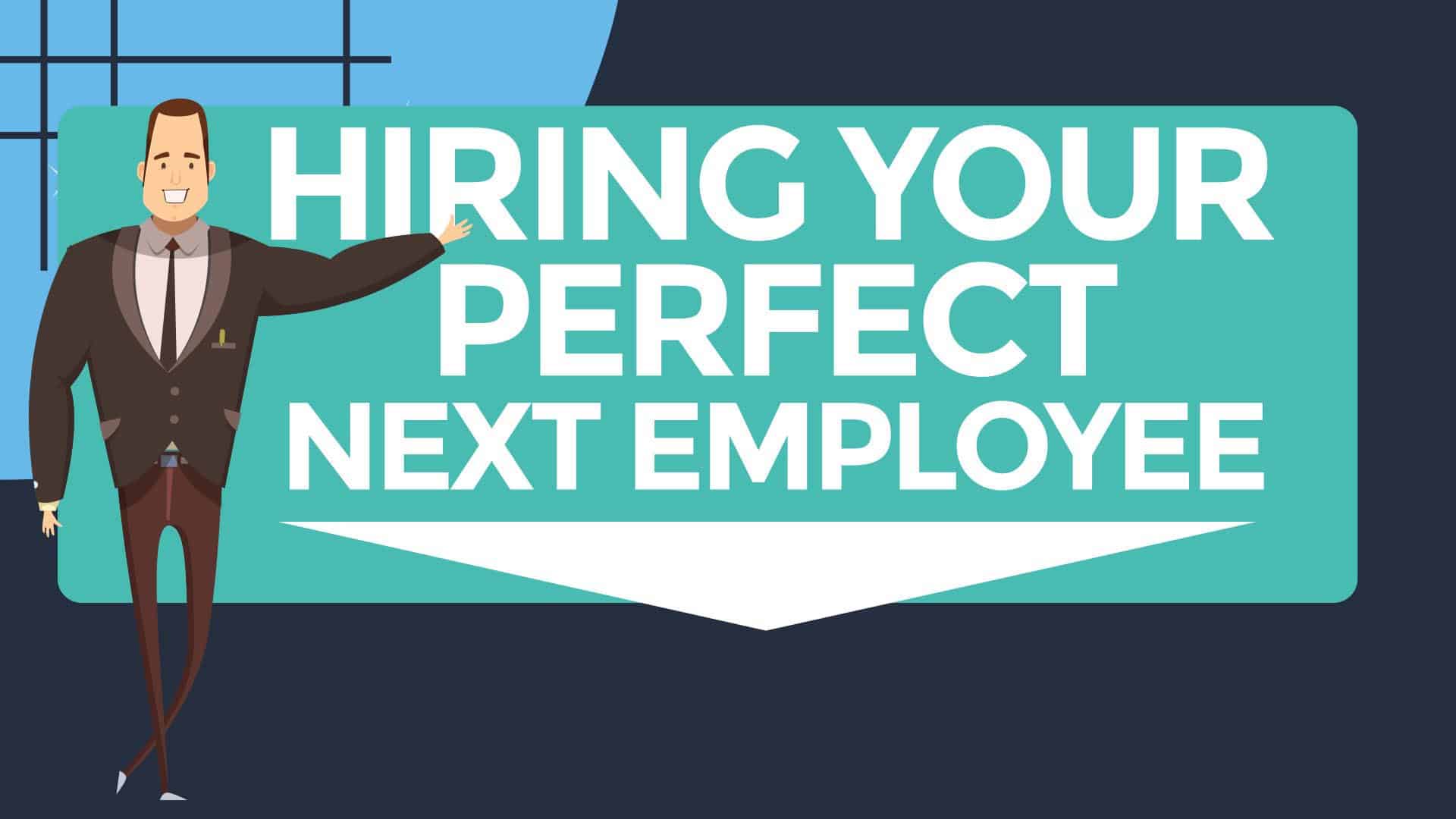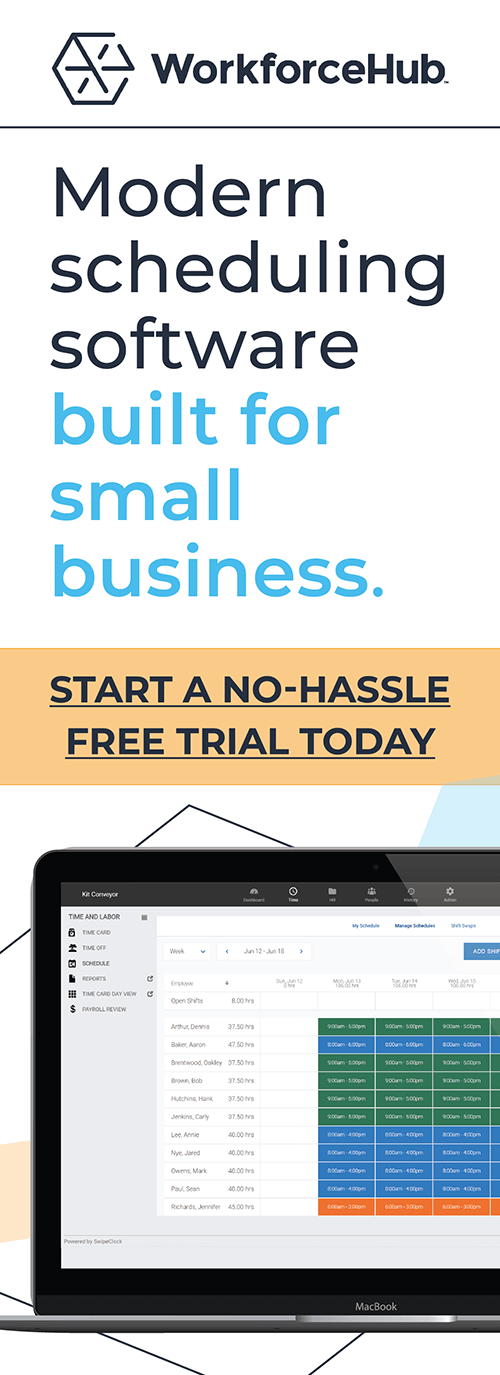Hiring Your Perfect Next Employee: Everything You Ever Wanted to Know (and More!)

A tremendous amount of effort goes into making a good hire. First, you need to clearly define the gaps in your organization, then describe the ideal candidate to fill them. Make the requirements too stringent and you risk missing out on well-qualified applicants. Make them too loose and you risk getting swamped by the response.
Next comes a whole string of activities that get the word out, evaluate responses, and usher candidates through interviews, background checks, offer and onboarding. It can be overwhelming but thankfully there are resources available to help!
Here are some key resources you can use to ensure that you have the right processes in place to hire your perfect next employee.
Ultimate Guide to Hiring
A recent extended blog post provides a deep dive into the steps involved in hiring a great employee. The posts walk you through the goals and actions required to define a job, create an effective post, get the post onto the right job boards, quickly screen applicants, conduct interviews, gather meaningful feedback, select the perfect hire, and make an offer. It also provides a wealth of references to other sources that add more detail and perspective on specific topics.
Read: The Ultimate Guide to Hiring Your Perfect Next Employee
Quick Takeaways on Hiring Perfect Next Employees
If you have limited time on want to preview the hiring process before delving into the details, check out this infographic on hiring. It provides a fun visual representation that gets the key points across and may be useful for identifying the steps you want to review first.
The Role of Applicant Tracking Software in Hiring
Applicant Tracking Systems can be extremely helpful in taming the most challenging hiring situations. If you hire on a regular basis, have multiple people involved in the selection process, or get more than a few applicants for each job, you can definitely benefit from applicant tracking.
Save time invested by your team, communicate more effectively with staff and applicants, quickly identify and interview top talent, and get an offer out before the candidate goes elsewhere.
Learn more about how applicant tracking systems work with this quick series of blogs and videos.
Step 1: Create an Effective Job Description
The job description serves several roles:
- Defines the gap in your company that you need to fill
- Clearly states the minimum requirements for an applicant filling the role
- Educates your staff on the responsibilities for the new hire
- Documents expectations of the new hire performance in the job
A well-crafted job description can be reused in whole or in part as needed for future hires. Invest in writing good job descriptions, then save them as templates for the future.
Read: How to Create a Job Description
Watch: Creating a Job Description
Step 2: Prepare for Prescreening
With a well-written job description in hand, take the time to list how you will initially judge each applicant. This step is important because you can save a lot of time by prescreening.
Think about what might absolutely eliminate a candidate. Maybe the job requires a driver’s license. Maybe the applicant must by law be over 21. These can be used as knock out questions that remove applicants as soon as they apply.
Other items on your prescreening list might help you do a quick quality sort. For example, if years of related experience are very important, you could add weight to those applicants with more experience. If higher education is important you could weight that.
The goal here is to identify ways that will help you spot the best candidates without eliminating potentially attractive candidates that have unusual qualifications.
Read: How to Prepare for Prescreening Applicants
Watch: Prescreening Preparation
Step 3: Post to Job Boards
This step can be one of the most challenging. There are so many job boards to choose between. Some have fees. Some are industry or location specific.
You need to post your jobs where your best candidates can find them, without overburdening yourself. An applicant tracking system can automate the posting process as well as manage the inbound applications from multiple job boards.
Read: How to Post to Job Boards
Watch: Posting a Job
Step 4: Screen Candidates
As applications pour in, start sorting! If you did the upfront work of defining your screening criteria, the top candidates should be easily identified. The unqualified should likewise jump out at you.
Be sure to keep your eyes wide open for the third possibility – what is known as the zebra (or the unicorn). Your screening process should allow you to quickly inspect all candidates to determine if there is something unusual about them that makes them noteworthy, even if they don’t have the top score on your theoretical model of the ideal candidate.
Applicant tracking systems present a dashboard view that lets you see candidates side by side and rank them by your screening criteria. This can save enormous amounts of time as well as the cost and headaches associated with paper.
Read: How to Screen Candidates to Quickly Identify Top Talent
Watch: Candidate Screening
Step 5: Schedule your Interviews
Once you have reduced your candidate pool to a manageable number of apparently qualified candidates, it is time to have a conversation. Use a tool to coordinate schedules so it is one-and-done not a series of back-and-forth emails.
Applicant tracking software can leverage your Google calendar or Outlook calendar to present date/time combinations to candidates for their selection. This is particularly useful when there are multiple candidates and/or multiple interviewers that must be scheduled.
Read: How to Schedule Interviews that Work for Everyone
Watch: Scheduling Interviews
Step 6: Collect Feedback that Matters
Each interviewer has their own style for determining whether a candidate is a good fit. To improve the odds that a candidate will be a great fit for the whole organization, make sure you have a way to collect feedback that can be combined to create a complete picture.
Create a feedback form that combines absolutes (yes/no) and ratings for key measures that are clearly described. Make these as quantitative as you can.
Include qualitative measures as well, and give ample opportunity to add freeform comments. This will capture impressions that can be illuminating to others on the evaluation team.
Read: Collecting Feedback from Multiple Sources Without Creating Mayhem
Watch: Collecting Feedback
Step 7: Make a Selection, Make it a Good One
Once all the feedback is collected, make it available to the evaluation team to review. Make it easy to see all final candidates and their overall rating, and to see the detail on each candidate. Everyone should be able to see all the feedback for each candidate.
Read: Picking the Cream of the Crop as your Perfect Next Employee
Watch: Making Selections
Step 8: Make an Offer ASAP
Okay, you should now be ready to make your offer. If you have streamlined your process, you should be able to make your selection very quickly and get an offer to your candidate of choice. Applicant tracking systems can speed the time from job requisition to job offer, giving you the best chance to hook top talent before it is snatched up by someone else.
Be at the ready with an offer letter template, so that the time from decision to offer is infinitesimal.
Read: Make an Offer that your Perfect Next Employee Can’t Refuse
Watch: Offering a Job
Step 9: Hire that Perfect Next Employee!
With an offer acceptance in hand, you are ready for the final hurdles. Run your background check. Do drug screening. Begin onboarding. Get your perfect next employee in the door, up and running, and engaged as quickly and effectively as possible.
Read: Close the Hiring Deal with Your Perfect Next Employee
Watch: Hiring
Simplify HR management today.
Simplify HR management today.
Navigating the Complexities of Healthcare Recruitment
The healthcare sector is renowned for its rewarding nature, offering professionals the chance to significantly impact individuals’ lives by aiding in their recovery from various ailments and conditions. However, for those tasked with recruitment within this sector, the challenges are plentiful. Delve into our in-depth guide for an array of strategies to elevate your healthcare…
Read MoreThe Importance of Facial Recognition Time Clocks for Small Businesses
Updated April 17, 2024 A facial recognition time clock is no longer a luxury. Advanced biometric clocks are a must-have for today’s workplaces. A facial recognition time clock is the best technology for tracking employee time. It solves a multitude of problems employers are facing with their workforces. What is a Facial Recognition Time Clock?…
Read More




